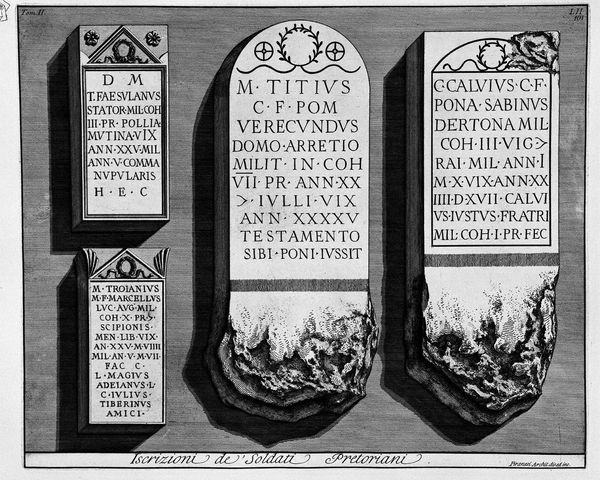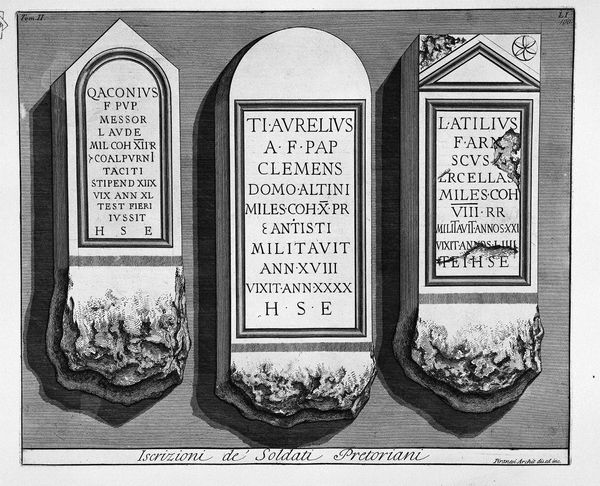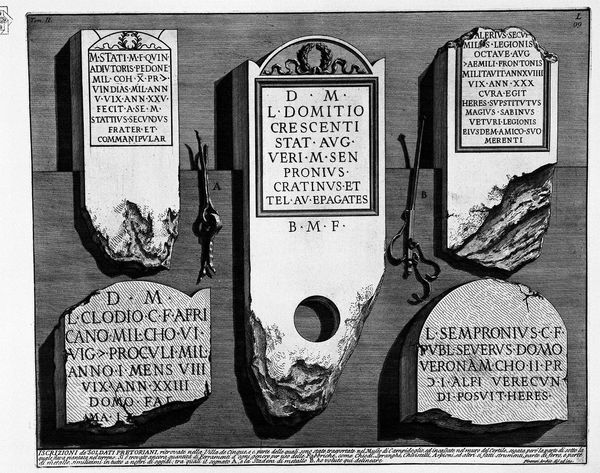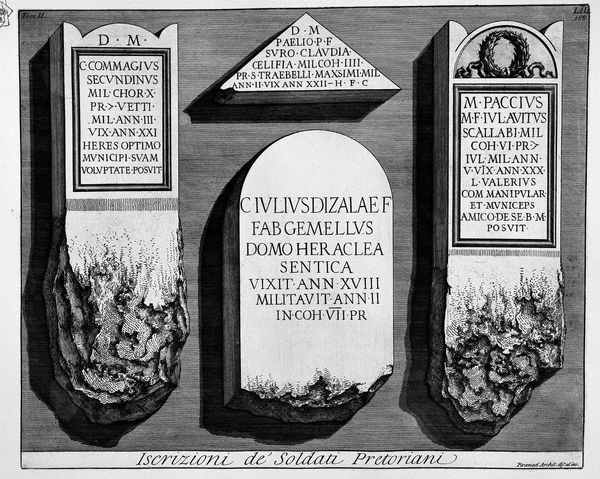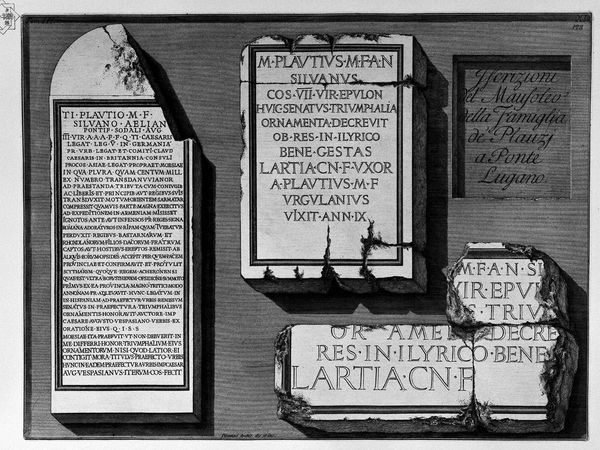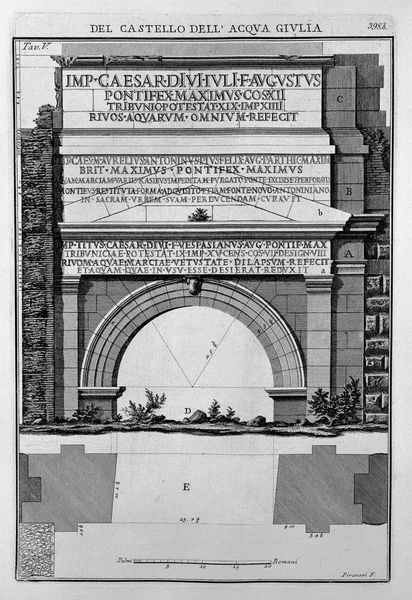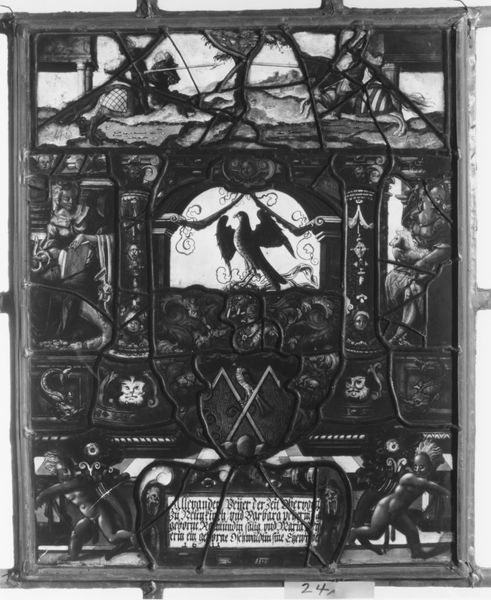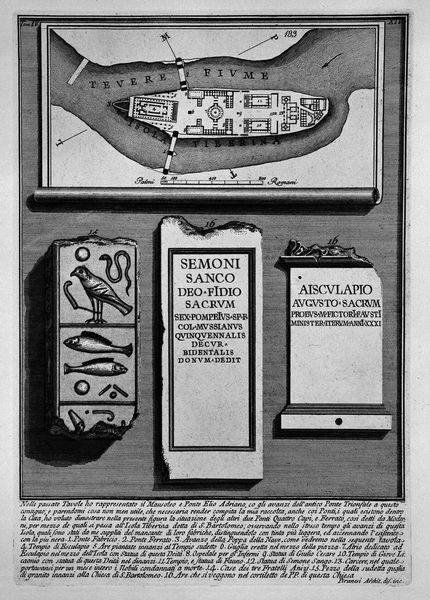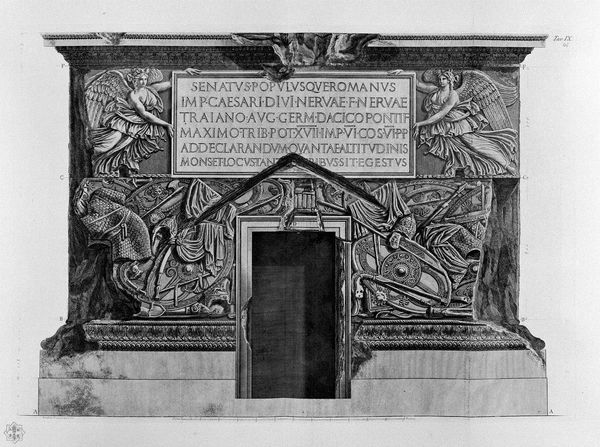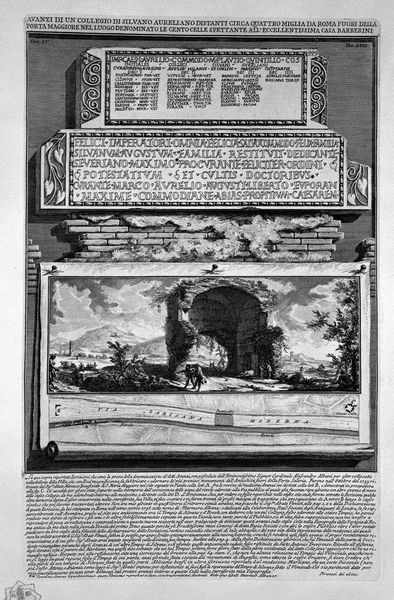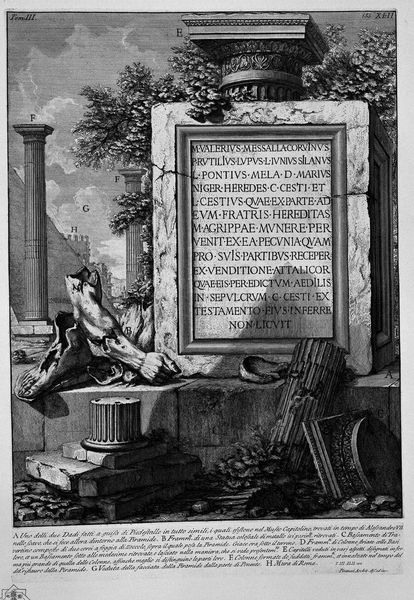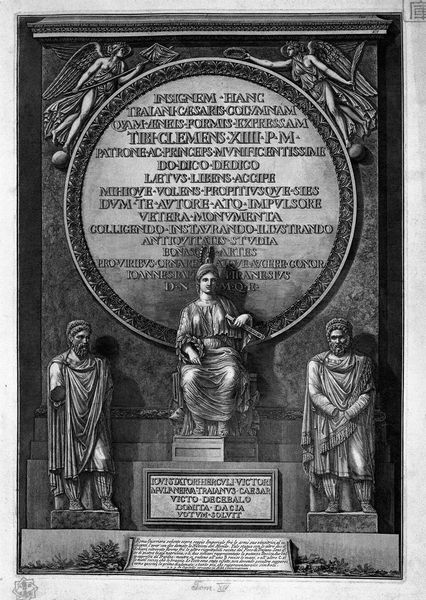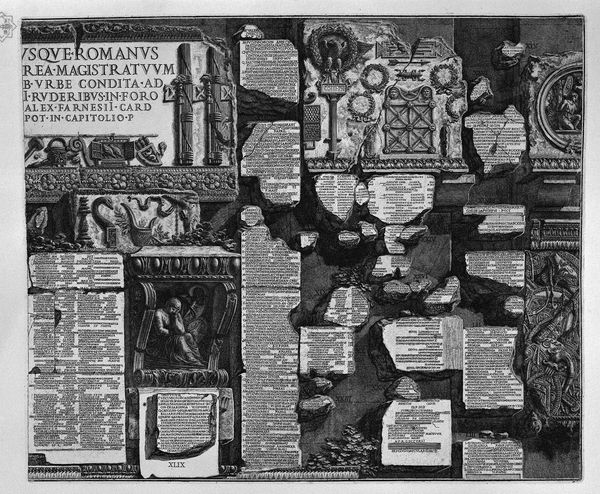
The Roman antiquities, t. 2, Plate LIV. Registration of `Soldiers Praetorian guards.
0:00
0:00
drawing, print, engraving
#
drawing
# print
#
ancient-mediterranean
#
history-painting
#
engraving
Copyright: Public domain
Curator: This engraving is by Giovanni Battista Piranesi and is titled "The Roman antiquities, t. 2, Plate LIV. Registration of `Soldiers Praetorian guards." It gives us a detailed look at Roman inscriptions. Editor: My first impression is how stark it is! The high contrast makes the stone almost look like it’s glowing, as if these records are radiating some vital, if austere, truth. Curator: Absolutely. Piranesi, while known for his romantic, even theatrical style, is really meticulous here in his documentation. It offers fascinating insights into the social structures of the Roman military and even how rank and service years were recorded and commemorated. Editor: I'm struck by how the crisp inscriptions contrast with the roughly hewn bases of these stones. It's like the official world of the Roman Empire emerging from the grit of everyday existence. Almost a kind of natural formation from the ground of its time. Do you think the artist aimed for that symbolic suggestion? Curator: It's very possible. I'm drawn to analyzing how such inscriptions serve as both individual markers of identity within a very formalized power structure and testaments to that same regime. How, even in their death, these soldiers served the interests of the state by providing such public declaration. Editor: The economy of text on each plaque, that rigid lettering, reminds me how much of their identities were perhaps being consciously suppressed to simply communicate to posterity…names, ranks, length of service, with any other expression edited out. So, what might seem commemorative instead evokes an eerie bureaucratic transaction. Curator: Precisely. We might even read their absence as a quiet act of rebellion, reclaiming personhood from this relentless bureaucracy. Editor: This piece makes us question if these memorial stones commemorate individuality, or if it shows identity subsumed by Roman law. Curator: Ultimately, Piranesi offers us a complex view. As artists we may seek to free expression but, he reminds us to investigate history with sensitivity, open to understanding its nuances. Editor: I like that—nuances even stone cannot completely hide.
Comments
No comments
Be the first to comment and join the conversation on the ultimate creative platform.
